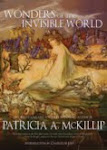
[1-Boathouse below Mt Fairview - click to enlarge]
The Saddleback Trail is located at Lake Louise in Banff National Park, Alberta.
Distance 3.7 km one way to Saddleback Pass
Difficult, strenuous
Elevation gain: 595m
Time: 2 – 5 hours or longer depending on level of fitness
The trailhead starts at the south-east side of Lake Louise near the boathouse.

[2- Saddleback Pass Trail - click to enlarge]
Hazards to watch out for on the trail are bears. Hikers should be in groups of 6 or more before venturing out.

[3- Larch trees on Mt. Fairview - click to enlarge]
Begins with an asphalt trail that soon turns to dirt where it begins to climb through the larch forest. Larches are the only pine needle bearing tree to lose them in the fall. Unlike pine needles from other pines, the larch needles are soft to the touch and change colour in the autumn before they fall off.

[4-Bow Valley from the Saddleback Pass Trail - click to enlarge]

[5-click to enlarge]

[6-Lake Louise resort from the Saddleback Pass Trail - click to enlarge]
If any hiker decides to climb the trail to Fairview Mountain they are advised to return by the trail. There have been a few hikers who have taken the scree down the northeast side only to learn they needed to be rescued.

[7-Hikers on the Saddleback Pass Trail]
Waypoints #131-133 are all intersections with other trails. Waypoint #132 is the trail to Fairview Lookout. To continue on the Saddleback Trail remain on trail headed straight.

[8-Larch trees on Saddleback Pass Trail - click to enlarge]
In 1km the hiker will emerge from the forest with a view of the valley and the Lake Louise ski area.

[9-Bow Valley from Saddleback Pass Trail - click to enlarge]

[10- Looking down from Saddleback Pass Trail - click to enlarge]

[11-Saddleback Pass in sight - click to enlarge]

[12-Mt Temple from Saddleback Pass Trail - click to enlarge]

[13-Looking through the Saddleback Pass - click to enlarge]

[14 - Larch tress - click to enlarge]

[15 - Mt. Temple from Saddleback Pass - click to enlarge]

[16-Looking north from Saddleback Pass - click to enlarge]

[17-Looking SE from Saddleback Pass - click to enlarge]

[18-South-east from Saddleback Pass - click to enlarge]

[19 - Larch Trees on southern side of Saddleback Pass - click to enlarge]

[20- View south-west from Saddleback Pass Trail - click to enlarge]

[21 - Saddleback Pass Trail - click to enlarge]

[22-Heading back down to Bow Valley - click to enlarge]

[23 - Village of Lake Louise and ski resort - click to enlarge]

[24 - Looking south-east down the Bow Valley toward Banff - click to enlarge]

[25-Mushroom and fresh snow on Saddleback Pass Trail - click to enlarge]

[26-Chateau Lake Louise from the Saddleback Pass Trail - click to enlarge]

[27 - Chateau Lake Louise from the Saddleback Pass Trail - click to enlarge]
Photo Credits: [1][2][3][4][5][6][7][8][9][10][11][12][13][14][15][16][17][18][19][20][21][22][23][24][25][26][27]-brilang CC=nc-sa-flickr.
Source:
ParksCanada - BanffMap of Saddleback Trail












































































